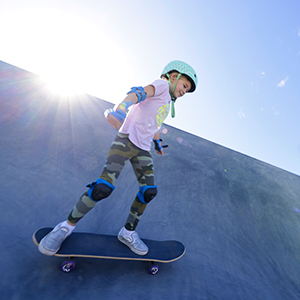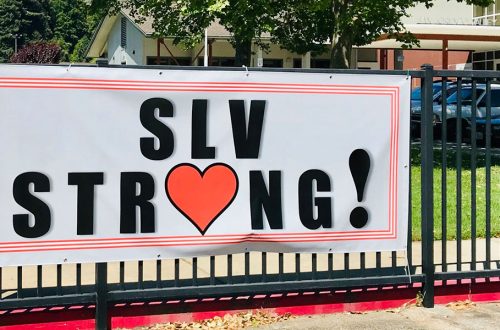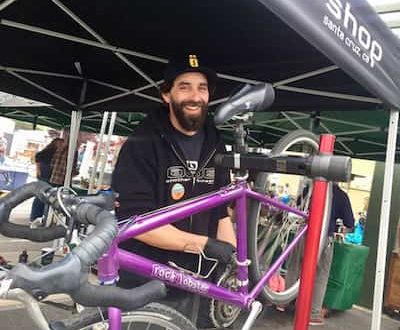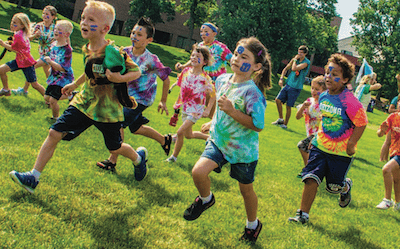
by Hugh McCormicK
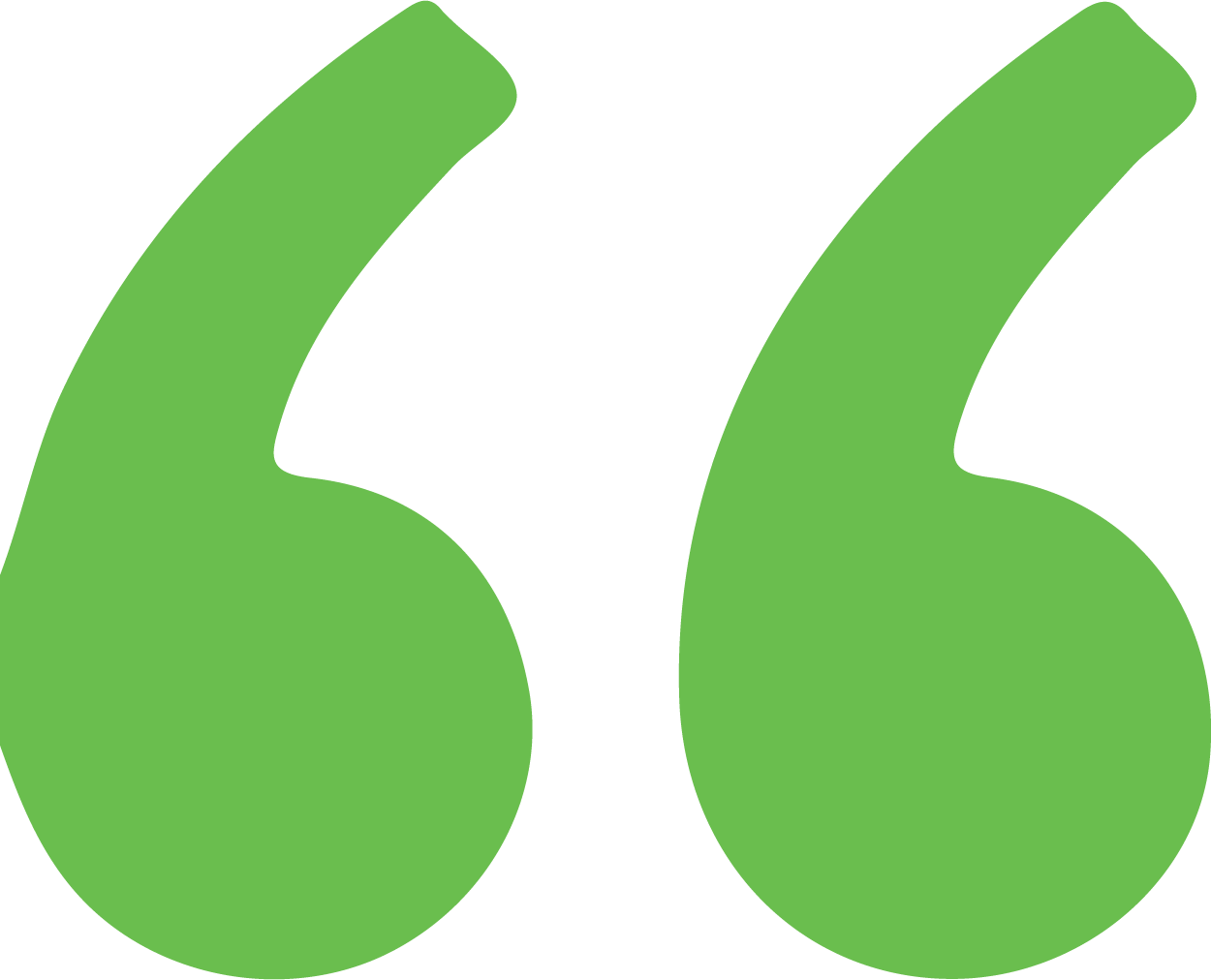
Skating is now considered cool. Nope, not that countercultural, subversive, slightly dangerous, punk-rock cool. Just cool. Everyone wants to be, or at least look like a skater.
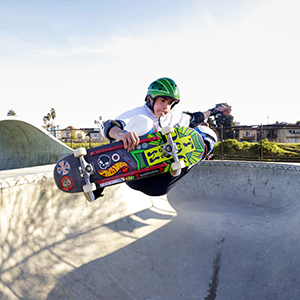 Rocking a black and yellow Huff sweatshirt, a well-loved pair of Levi’s, and a sweet pair of Nike SB’s, 38-year-old Ralph Mendoza rings up (and talks up) a steady stream of customers on a wet and windy Saturday afternoon.
Rocking a black and yellow Huff sweatshirt, a well-loved pair of Levi’s, and a sweet pair of Nike SB’s, 38-year-old Ralph Mendoza rings up (and talks up) a steady stream of customers on a wet and windy Saturday afternoon.
Laughter echoes off the board-covered-walls of Santa Cruz’s iconic skating emporium, Bill’s Wheels. Throngs of groms (lil’ skaters) peruse racks of carefully curated textiles and ogle over the shop’s brilliant rainbow of wheels, decks, and skating accessories.
Business, at Bill’s, is booming.
“Business has been beyond good,” admits Mendoza. “And skating is becoming super popular right now. Just because of COVID. It gives antsy kids an outlet to release some of that pent-up energy.”
The moment that COVID-19 forced the United States into quarantine and lock-down-mode, the popularity of skateboarding shot through the roof. Suddenly, everyone wanted to be a skater!
Almost immediately, equipment started to sell out in skate shops across the country, and retailers like Bill’s Wheels had to scramble to get their hands on product. Complete set ups — board, trucks, tape, and wheels — were the hottest sellers, but many skate shops had to wait for months to stock certain boards and accessories.
Even before the days of oh-so-precious hand sanitizer, toilet paper hoarding and face masks, skateboarding was a sport on the rise. Some folks go so far as to call the past five years skateboarding’s “golden age.” Skating’s impact on fashion, music, social media, and entertainment in general has been astounding. Researchers say the skateboard market will be worth a cool $2.4 billion by 2025 —but that was before the recent COVID-19 insanity.
Skateboarding is going mainstream — heck, this year it’s going to be an actual Olympic sport! — and the days where “punks,” “outcasts”, and “misfits” were the only dudes out there street-shredding are looooong gone. There has been a significant — industry shaking —change in the mentalities regarding skateboarding in general.
The fact that many cities now have dedicated skate parks has certainly helped things along and allowed skating to spruce up its image. No more scary punks raising hell, destroying private property, smoking doobies and drinking in the dark corners and fringes of society.
Today’s skating community is stronger, and many say far more welcoming, than at any point in the sport’s storied history. It’s why, especially during the coronavirus, we’ve experienced a sizable shift in skating’s audience. There are more lady shredders than ever! And an older generation is finding new, or renewed, love for the art form.
“There’s been a lot of girls just starting to skate. And it’s awesome! They’re getting really good. It’s pretty rad to watch,” says Mendoza. “I’m 38 and I started as a munchkin. All these groms are the older dudes now. They’re getting back into skating when their kids pick it up. Two generations.”
Girl skaters — they number around 10 percent — bring a new and renewed energy the ever-swelling skating community. And it’s pretty rad how some of these chicks ride, breaking gender stereotypes along the way. As of now, there’s a rather healthy contingent of pro-girl-skaters who make a living doing what they love. Just a decade ago, no one could have dreamed that would be possible
Increasingly, an older generation, who skated passionately in their youth, are dusting off their rigs and hitting up skate parks —alone or with their kids. 10 years ago, teens represented a majority — over 55%percent — of all skaters out there. That figure continues to drop, and teens represent just 44% of the world’s 80 million skaters today.
“For sure skating is becoming mainstream. It’s not uncool like it was in the early 1990’s. With the X-Games and it being on TV, people are starting to make money skating. That made it much cooler,” Mendoza explains.
Social media has done wonders to globalize the sport of skateboarding—bringing eyes to some amazing skaters who would otherwise remain anonymous. When skaters started to post content on video sharing websites like Instagram and YouTube, the sport began to rapidly evolve. The internet gave skateboarding a wider, and instantly global audience.
Two decades ago, skate videos took months and even years to edit and produce. Now there are hundreds of hours of absolutely amazing skating available at our fingertips.
“Social media helps kids get noticed. You can be from nowhere USA and get picked up and sponsored. It’s become a huge way for kids to promote themselves. It’s truly making skating accessible to more people,” says Mendoza.
Skating is now considered cool. Nope, not that countercultural, subversive, slightly dangerous, punk-rock cool. Just cool. Everyone wants to be, or at least look like a skater.
Millions of non-skaters choose to rock skate brands like Element, Independent, Thrasher, Santa Cruz, and Vans every day. And Infamous NYC streetwear brand Supreme went from underground skate shop to doing over a cool billion in sales in less than a decade.
Rap stars like Logic, Little Wayne, and Tyler the Creator sing about skating and actively identify with skate culture. And Lupe Fiasco’s “kick, push” (So he kick push kick push kick push kick push coast —And away he rolled jus’ a rebel to the world with no place to go) — went from underground tune to skating’s anthem.
Since its start, skateboarding has gone through many ups and downs. The sport’s first downfall came in the 1980’s when all of skateboarding’s top magazines went out of business, tons of skateparks closed, and overall participation in skateboarding dropped precipitously. Skating went through another depressing phase.in the early 1990’s, but the sport quickly bounced back with the rising popularity of street skating, and the introduction of televised events like the X-Games. Skating has endured.
Call it the COVID-effect, but skating’s popularity and skating culture itself is stronger today than it has ever been. There is an estimated 80 million people worldwide who skate — at least occasionally—and more are picking up the sport every day.
“The coolest thing about skateboarding is the community,” says Mendoza. “It’s like a big family. If you skate and you are somewhat decent you are always welcome to spots where others are skating.”
Over the years, Santa Cruz has become somewhat synonymous with skateboarding. Millions of riders (and everyday Joes) around the globe proudly sport local (and legendary) skate brand NHS’ signature “red dot” logo.
We are more-than blessed with a ton of fantastic skateparks and a solid collection of local skate shops who are more-than-eager to get you hooked up and rolling like a champ. Our vibrant, and actively growing skating community in Santa Cruz County has something truly special.
Hugh graduated from UCSC – magna cum laude- with a BA in sociology and a focus on global information and social enterprise studies. If you need to get a hold of him or his chiweenie Groot, check 26th Avenue beach or De La Veaga disc golf course.

